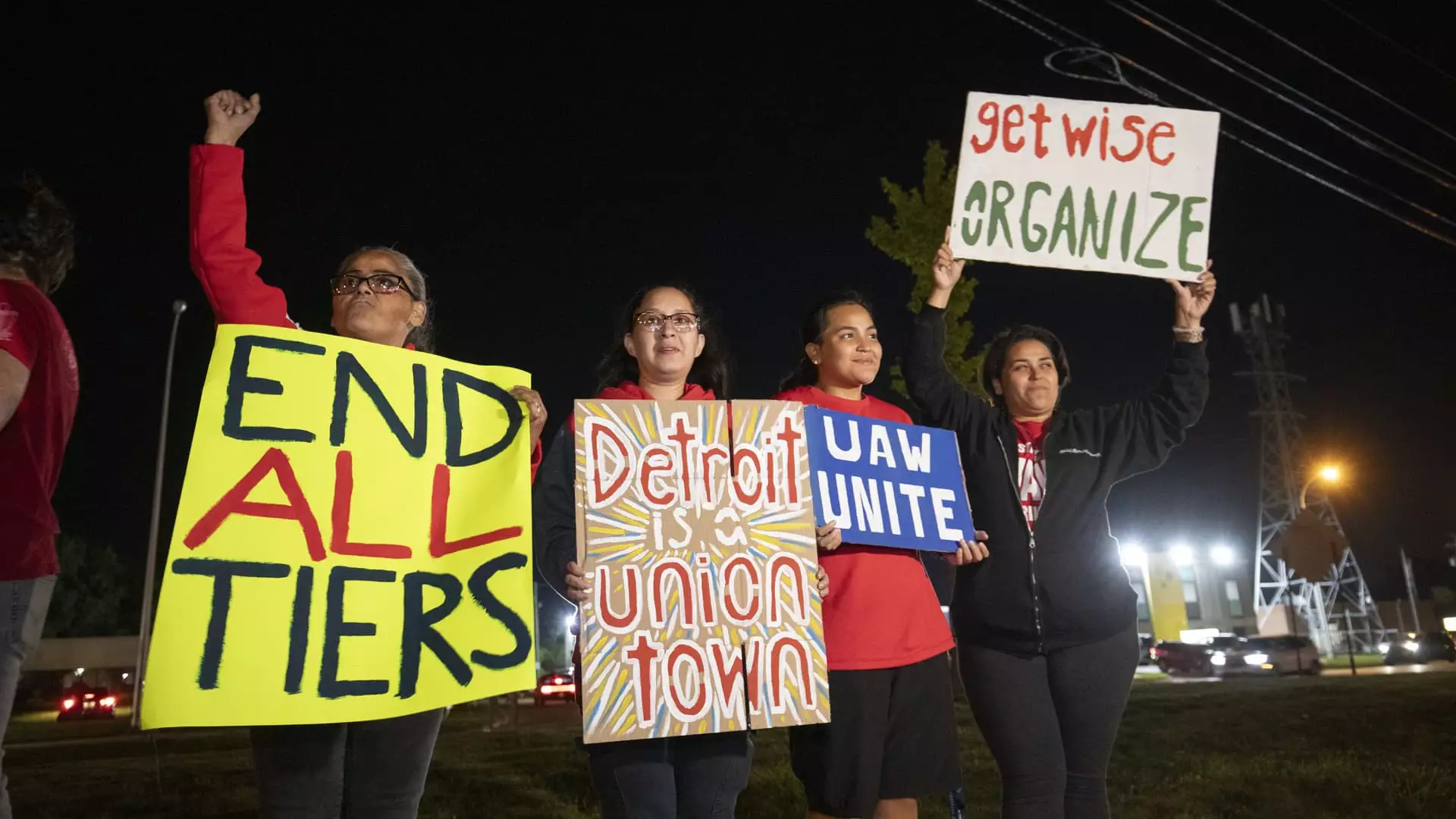The United Auto Workers (UAW) labor union made history by launching targeted strikes against the three major Detroit automakers early Friday morning. The strikes affect three plants that produce popular models such as the Ford Bronco, Chevrolet Colorado, and Jeep Wrangler. While the strikes began simultaneously, the road to a deal may be different for each automaker. Stellantis, the recently formed company resulting from the merger between Fiat Chrysler Automobiles and Peugeot, is expected to face a more challenging path compared to its crosstown rivals, Ford Motor and General Motors.
One of the major hurdles for Stellantis in this labor dispute is its excess production capacity worldwide. The company has indicated its plans to close or sell 18 of its U.S. facilities, including factories and parts depots. With a current total of about 35 factories and parts distribution centers in the U.S., the union is unlikely to accept this plan willingly. Stellantis has been preparing for a potential lengthy strike, as reflected by its higher vehicle inventory compared to Ford and General Motors. According to data from Cox Automotive, Stellantis’ U.S. brands had over 100 days’ worth of vehicles in dealer inventories or in transit to dealers at the beginning of September.
In contrast to Stellantis’ situation, the UAW’s strike against Ford may be relatively brief. UAW President Shawn Fain and Ford executives’ recent comments suggest that Ford is closest to reaching a deal with the union. This is evident in the UAW’s decision to strike only part of Ford’s Michigan Assembly Plant, specifically the areas where vehicles are painted and undergo final assembly. The strike at Ford seems to be a strategic move by the union to put pressure on the company to meet their demands promptly.
General Motors may also avoid a lengthy strike based on details of their final offer before the strike. The offer, made on Thursday, was similar to Ford’s proposal, including a 20% wage increase over four years, additional vacation days, and two weeks of parental leave, among other concessions. If Ford reaches an agreement with the UAW soon, General Motors could follow suit and use Ford’s deal as a template.
However, as of Friday morning, it seemed that Stellantis was gearing up for a protracted fight. The company expressed its disappointment in the UAW’s refusal to engage in a responsible manner to reach a fair agreement. Stellantis immediately activated contingency measures and stated that it would make the necessary structural decisions to protect its North American operations and the company’s overall interests. This suggests that Stellantis is preparing for a potentially lengthy battle with the UAW.
Following a strike, it is customary for the UAW and automakers to take a break from negotiations. Meetings are expected to resume over the weekend as both parties work towards finding common ground. The outcomes of the negotiations will have significant implications not only for the automakers and the UAW but also for the industry as a whole.
The UAW strike against the three Detroit automakers has brought attention to specific challenges faced by each company. While Ford appears to be on the verge of a deal, Stellantis’ excess production capacity creates a more complex situation. General Motors, on the other hand, may find an easier path to resolution if Ford’s deal serves as a reference point. As negotiations continue, the automotive industry eagerly awaits the outcome and its potential impact on the future of labor relations within the sector.


Leave a Reply